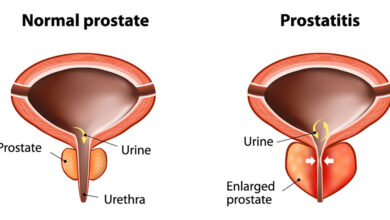Choosing the Right First Aid Kit for Your Needs: A Practical Guide

Let’s all face it – we all emphasise the importance of having first aid kits, but more often than not, we neglect the importance of choosing one that caters to our needs.
Take a second and think – is the first aid kit in your home suitable to treat a snake bite, or can it only cater to the bruises on your little ones? Can it be used to deal with underlying medical conditions and allergies, or is it just made to suit common injuries? If you are unsure, it’s time you choose the right first aid kit that can cater to your unique needs.
However, finding the right first aid kit can feel like looking for a needle in the hay sack. And, of course, we get you. There are many first aid kits available on the market; thus, it can be a little bit confusing to know which will work best for you.
Luckily, we are here to make the choosing process easy for you. In this comprehensive guide, we will shed light on selecting the appropriate kit based on specific needs such as home, office, school, travel and sports. We will also share the key considerations and how to customise your first aid kits. Read on to learn more!
Choosing the Most Suitable First Aid Kit For Your Needs – Everything You Need to Know
First Aid Kit for Home
When at home, it’s imaginable to cut or burn yourself while preparing a meal. It’s also easy for your loved ones to experience common injuries, including cuts and scrapes while playing. That said, you want to ensure that your first-aid kit caters for such injuries. Here are the factors to consider before buying a random first aid kit.
- The number of people residing in your home: This will help determine the right size of your kit.
- The age group of your household: If you have kids, there will be higher chances of more common injuries; thus, you might want to go up in size.
- The storage: Your storage capacity will determine the size of your kit as well.
First Aid Kit for Workplace
Every workplace in Australia is obligated to meet safety requirements to ensure that every employee has a safe working environment. Part of the safety requirement is employers providing a workplace first aid kit that caters to each employee’s diverse needs. Here are some of the factors employers should consider.
- Workplace size and type: Larger workplaces or those with high-risk activities may require more comprehensive kits than smaller ones.
- Number of employees: The number of employees in the workplace will help determine the quantity of supplies needed in the first aid kit.
- The potential hazard common in the workplace environment: These aren’t common injuries but specific injuries that are likely to occur based on the nature of the work.
First Aid Kit for School
Choosing a school first aid kit requires careful consideration to meet the specific needs of every student. With children experiencing different types of injuries and medical conditions based on age, it is essential for teachers and parents to take time while designing school first aid kits. Here are some of the factors to consider;
- Size and portability: With most schools having a large compound, it’s essential to get a first aid kit that’s easily portable and has a manageable size.
- Comprehensive contents: Take into account the specific needs of the school, including the number of students, age group and known medical conditions.
- Storage: Go for a durable school first aid kit that can withstand harsh environmental conditions.
First Aid kit For Travelling
If you love exploring the great outdoors, having a first aid kit during your trip goes without question. It gives you confidence to be safe even when the unexpected occurs. These are the considerations to make before purchasing one;
- Type of activities you will be undertaking: Invigorating hikes and bike riding on steep mountains can pose higher risks than just taking a nature walk.
- How remote the trip is: If you will be far away from medical facilities, you may need a more comprehensive first aid kit.
- Dangerous animals around the area: For those travelling to places with snakes, spiders, jellyfish and other dangerous creatures.
Sports First Aid Kit
A good sports first-aid should be well-equipped to cater to all injuries( sprains and strains) during sports activities. Here are factors to consider to ensure your first aid kit is well-equipped.
- The type of sport: There are two categories of sports- Contact and non-contact sports. If you are dealing with contact sports, consider going for a first aid kit that can treat bruises and fractures.
- Common sports injuries: These are injuries that are common in all types of sports, be it contact or non-contact. They can range from sprains and strains to fractures, dislocations, cuts, and abrasions.
- Athletes’ age group: Consider age, skill level, and overall health of the athletes. Youth athletes have different needs compared to adult athletes. The kit should be suitable for specific user groups.
How to Customise Your First Aid Kit
Here comes the most critical part. Once you have chosen the suitable first aid kit based on your desired setting, there are some extra additions you need to make to cater for every person’s specific needs. Now, this applies when someone in your given setting has underlying medical conditions or allergic reactions.
For anyone with an underlying medical condition, add the prescribed medication to the first aid kit. For those with allergy reactions, including asthma, consider adding non-allergic first aid kit equipment.
Choosing a suitable first aid kit doesn’t have to be challenging. As long as you understand your settings and the different needs, your first aid kit should be able to cater for all your specific needs. Don’t risk a life. Get your first aid kit and keep those around you safe – simply make notes of your unique lifestyle needs and situations, stock accordingly, and you’ll have a first aid kit that will serve you and your loved ones without fail.
Essential first aid advice equips you to respond effectively in emergencies. Learn life-saving techniques and protocols for administering immediate assistance. Be prepared to handle medical emergencies with confidence and competence.


